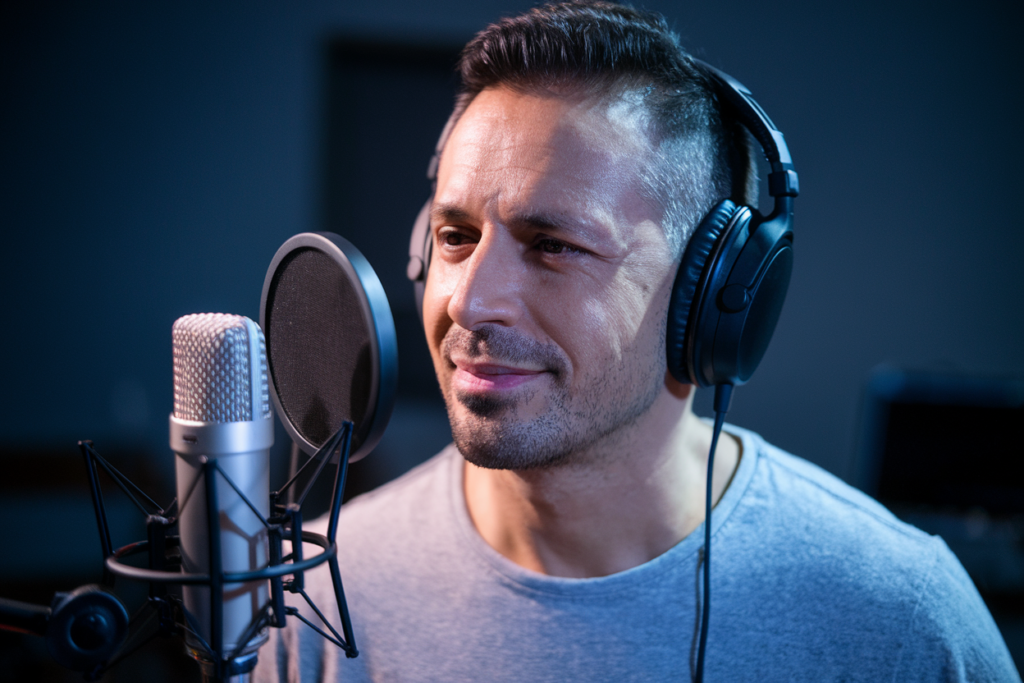Key Takeaways
- Diversity of Accents: Turkish is a rich tapestry of regional accents, each reflecting the unique cultural characteristics of its area.
- Standard vs. Regional Accents: The Istanbul accent serves as the standard for media and education, while other accents like Anatolian and Aegean offer distinct phonetic qualities.
- Cultural Significance: Recognizing regional accents enhances understanding of Turkish culture and fosters better communication in both casual and professional settings.
- Impact on Media and Education: Accents play a crucial role in voiceovers and dialectology research, influencing how language is taught and perceived.
- Personal Connections: Engaging with locals using their regional dialect can enrich interactions, demonstrating respect for cultural diversity.
Have you ever wondered how regional Turkish accents shape conversations across Turkey? Just like any other language, Turkish isn’t just one uniform sound; it’s a rich tapestry of dialects and accents that reflect the country’s diverse culture. Understanding whether these regional Turkish accents are used can unlock a deeper appreciation for the language and its speakers.
Overview of Turkish Accents
Turkish accents reflect the rich diversity within the language spoken across Turkey. Each region boasts unique characteristics, influencing pronunciation, vocabulary, and intonation. Understanding these accents can be vital for effective communication.
Major Regional Accents
- Istanbul Accent
The Istanbul accent serves as the standard in media and education. It features clear enunciation and is widely recognized by speakers.
- Anatolian Accent
The Anatolian accent incorporates distinct vowel sounds, creating a more melodic tone compared to other regions.
- Aegean Accent
The Aegean accent stands out due to its softer consonants and slight elongation of vowels, making it pleasant to hear.
- Black Sea Accent
The Black Sea region’s accent includes a unique rhythm with an emphasis on certain syllables that may differ from central Turkish speech patterns.
- Eastern Anatolian Accent
This accent presents variations in both consonant pronunciation and sentence structure, reflecting influences from neighboring languages.
Importance of Recognizing Accents
Recognizing these regional nuances enhances your understanding of Turkish culture and communication styles. Whether you’re engaging in casual conversations or professional settings, adapting to local dialects fosters better connections with speakers.
By acknowledging regional differences, you tap into deeper layers of meaning within conversations—making interactions not just informative but also enriching experiences.
Characteristics of Regional Accents
Turkish accents vary significantly across regions, each showcasing unique features that reflect cultural diversity. Understanding these characteristics enhances your appreciation of the language and its speakers.
Northern Turkish Accents
Northern Turkish accents often exhibit a distinct rhythm. Speakers emphasize certain syllables, creating a lively tone. The accent features clearer consonants and can include a softer pronunciation of vowels. Regions like Trabzon and Rize showcase this melodic quality, making conversations feel more animated.
Southern Turkish Accents
Southern Turkish accents are known for their warmth and expressiveness. In areas such as Antalya and Mersin, you’ll notice elongated vowel sounds that add richness to speech. The use of softer consonants creates an inviting atmosphere during interactions, contributing to the friendly nature often associated with southern Turkey.
Eastern Turkish Accents
Eastern Turkish accents highlight linguistic influences from neighboring languages, resulting in notable variations in pronunciation. In places like Van and Erzurum, you might encounter different vowel shifts and changes in sentence structure that give these accents their distinctive flair. These regional traits not only enhance communication but also reflect the region’s rich history.
Western Turkish Accents
Western Turkish accents blend various elements from neighboring regions while maintaining their own identity. In cities like Izmir or Aydın, you’ll hear softer consonants paired with a rhythmic flow in speech patterns. This combination creates an engaging auditory experience that’s appealing to listeners, making it easier to connect with local speakers.
Recognizing these regional nuances enriches your understanding of Turkish culture and provides insight into how people communicate across different parts of Turkey. Each accent offers a unique perspective on the language that can deepen your connections with its speakers.
Usage in Various Contexts
Regional Turkish accents play a significant role in various contexts, influencing communication and cultural expression across Turkey. Understanding these nuances enhances both personal interactions and professional engagements.
Media and Entertainment
In media and entertainment, regional accents add authenticity to voiceovers. Voice artists often adapt their styles to reflect local dialects, making characters relatable to specific audiences. For example, a voice actor portraying a character from the Black Sea region will incorporate unique intonations that resonate with viewers familiar with that accent. This practice not only enriches storytelling but also engages listeners on a deeper level.
Education and Dialectology
In education, studying regional Turkish accents informs dialectology research. Scholars explore how accents shape language acquisition and social identity among learners. By analyzing variations in pronunciation and vocabulary, educators can develop tailored teaching strategies that respect students’ linguistic backgrounds. Recognizing these differences fosters an inclusive environment where all voices are valued.
Everyday Conversations
In everyday conversations, regional accents influence social interactions significantly. Engaging with locals using their native dialect can enhance relationships, whether casual or professional. Adapting your speech style demonstrates respect for cultural diversity while fostering connection. Accents provide context clues about individuals’ origins, enriching discussions by adding layers of meaning beyond the words spoken.
Understanding these contextual uses of regional Turkish accents offers valuable insights into effective communication within diverse settings across Turkey.
Influence on Language Perception
Regional Turkish accents significantly shape how you perceive the language and its speakers. Each accent carries distinct characteristics that influence not just pronunciation but also vocabulary and intonation. For instance, the Istanbul accent dominates media and education with its clear enunciation, while accents from Anatolia offer a melodic quality through their unique vowel sounds.
You might notice how Northern Turkish accents, particularly from Trabzon and Rize, create a lively tone filled with clearer consonants and softer vowels. In contrast, Southern Turkish accents from Antalya and Mersin exude warmth with elongated vowel sounds that can make conversations feel more expressive. When you listen to Eastern Turkish accents from regions like Van and Erzurum, you’re hearing influences from neighboring languages that result in unique pronunciations.
The impact of these regional variations extends into media presentations as well. Voice artists often adapt their delivery to reflect local dialects, making voiceovers resonate more authentically with specific audiences. This practice adds depth to storytelling in films or advertisements by enhancing relatability for viewers familiar with those accents.
In everyday interactions, using local dialects fosters better connections among people. It demonstrates respect for cultural diversity while enriching discussions with contextual clues about individual backgrounds. Engaging with someone who speaks your regional accent can create an immediate sense of belonging.
Understanding these nuances helps you appreciate the rich tapestry of communication styles across Turkey. By recognizing the influence of regional accents on language perception, you enhance your ability to connect meaningfully in various contexts—be it casual conversations or professional exchanges where effective communication is vital.
Conclusion
Regional Turkish accents play a vital role in the richness of the language. They reflect unique cultural identities and enhance communication across diverse communities. By embracing these accents, you not only deepen your understanding of Turkish but also show respect for its speakers.
Navigating through Turkey’s linguistic landscape opens doors to authentic connections. Whether you’re engaging in casual conversations or professional settings, adapting to local dialects can enrich your interactions significantly. Each accent offers insights into the cultural nuances that shape everyday life.
Appreciating regional variations is key to unlocking a deeper appreciation for Turkish culture. So next time you encounter someone with a distinct accent, embrace it as an opportunity to connect and learn more about their background.
Frequently Asked Questions
What are the main Turkish accents discussed in the article?
The article highlights several major Turkish accents, including the Istanbul accent, Anatolian accent, Aegean accent, Black Sea accent, and Eastern Anatolian accent. Each has unique characteristics that influence pronunciation, vocabulary, and intonation.
Why is the Istanbul accent considered standard?
The Istanbul accent is regarded as standard in media and education due to its clear enunciation and widespread recognition. This makes it a common point of reference for speakers across Turkey.
How do regional accents affect communication in Turkey?
Regional accents significantly shape communication by influencing pronunciation and vocabulary. Adapting to local dialects can enhance relationships and foster deeper connections within casual and professional settings.
What role do regional accents play in media and entertainment?
In media and entertainment, regional accents add authenticity to voiceovers. They allow voice artists to connect more effectively with specific audiences by reflecting local dialects in their performances.
How can understanding these accents improve cultural appreciation?
Recognizing regional nuances enriches our understanding of Turkish culture and communication styles. It helps build meaningful connections with speakers by demonstrating respect for their linguistic backgrounds.







